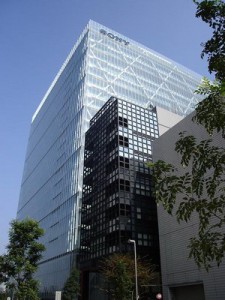 Sony Electronics and Sony Pictures Entertainment in the U.S., under the umbrella of Sony Corporation of America, announced that they have come together to purchase more than 143 million kilowatt-hours (kWh) of green power annually for 2011, which is enough green power to meet an estimated 49 percent of these entities’ electricity use. As a result of this purchase, Sony Corporation of America ranks No. 27 on the U.S. Environmental Protection Agency’s (EPA’s) National Top 50 list of the largest green power purchasers.
Sony Electronics and Sony Pictures Entertainment in the U.S., under the umbrella of Sony Corporation of America, announced that they have come together to purchase more than 143 million kilowatt-hours (kWh) of green power annually for 2011, which is enough green power to meet an estimated 49 percent of these entities’ electricity use. As a result of this purchase, Sony Corporation of America ranks No. 27 on the U.S. Environmental Protection Agency’s (EPA’s) National Top 50 list of the largest green power purchasers.
Sony is purchasing Green-e verified renewable energy certificates (RECs) through Renewable Choice Energy and 3Degrees. Additionally, Sony is using its own on-site solar installations, which produce more than 600,000 kWh/year. These activities demonstrate a proactive choice to switch away from traditional sources of electricity generation and support cleaner renewable energy alternatives.
Earlier this week, EPA updated each of its National Top Partner lists, highlighting some of America’s largest green power purchasers. Each list highlights EPA Green Power Partners that have contracted the largest annual voluntary purchases as of January 5, 2011. EPA updates its Top Partner Lists quarterly at www.epa.gov/greenpower/toplists. Green power is electricity that is generated from environmentally preferable renewable resources, such as wind, solar, geothermal, biogas, biomass and low-impact hydro.
According to EPA, Sony’s green power purchase of more than 143 million kWh is equivalent to avoiding the carbon dioxide (CO2) emissions of nearly 20,000 passenger vehicles per year, or the CO2 emissions from the electricity use of nearly 13,000 average American homes annually. This purchase also qualifies the Company for EPA’s Green Power Leadership Club, a distinction given to organizations that have significantly exceeded EPA’s minimum purchase requirements. Green Power Leadership Club members must purchase ten times the partnership’s minimum requirement organization-wide. Sony’s recent green power purchase and on-site solar generation initiatives are part of its ongoing support of renewable energy and its commitment to reducing its environmental impact globally under its “Road to Zero” environmental plan, through which the Company aims to achieve a zero environmental footprint by 2050.






